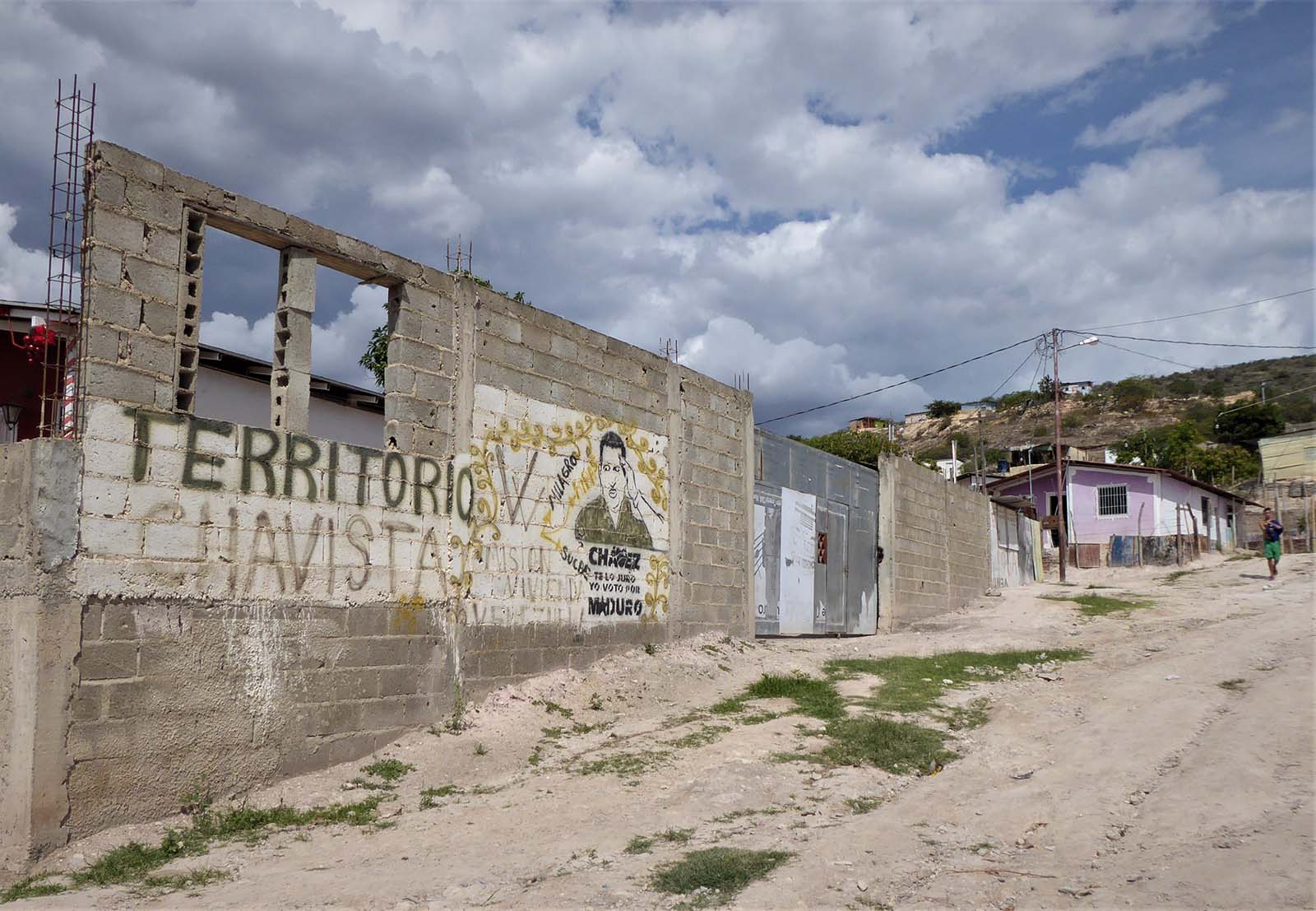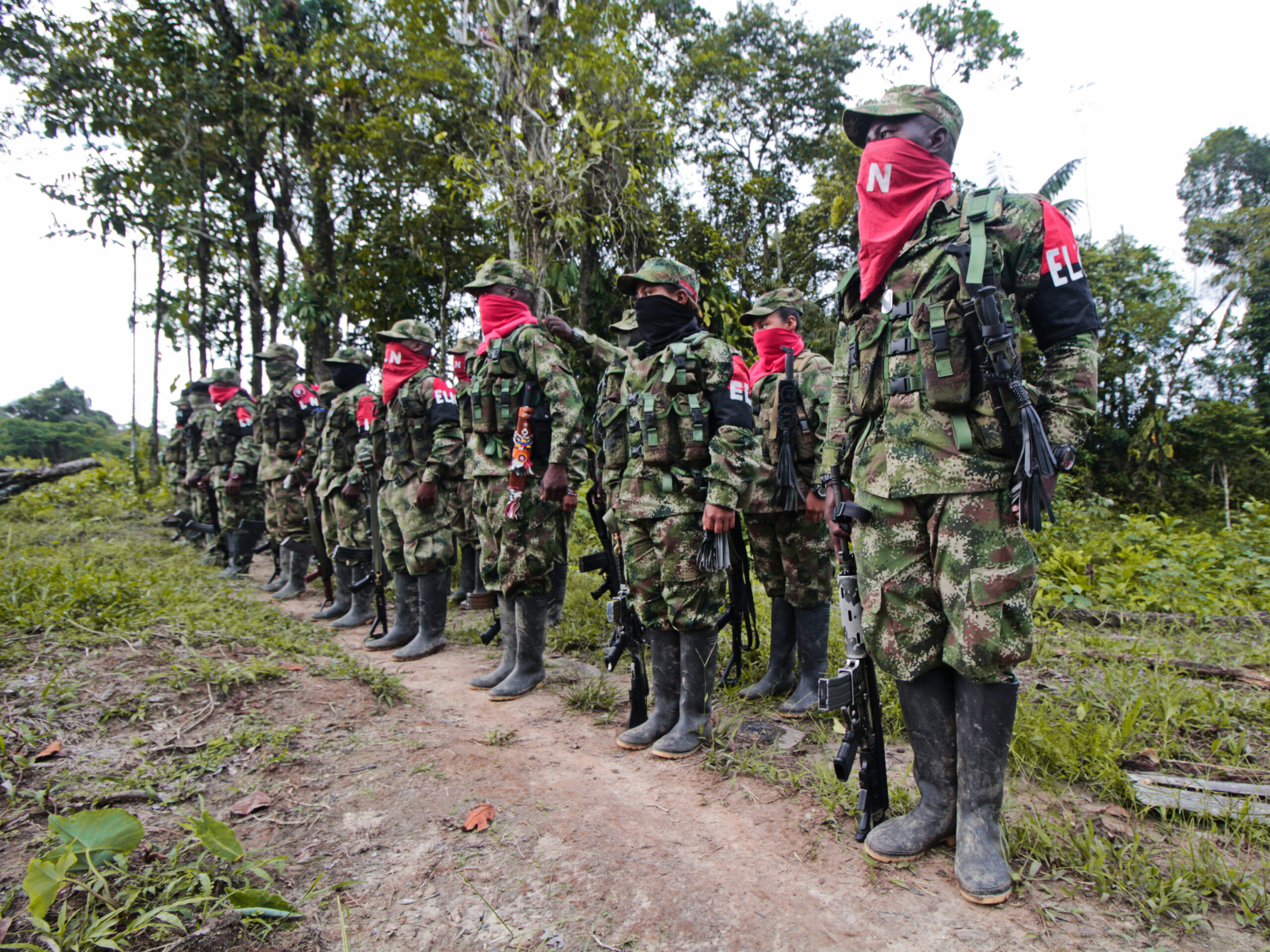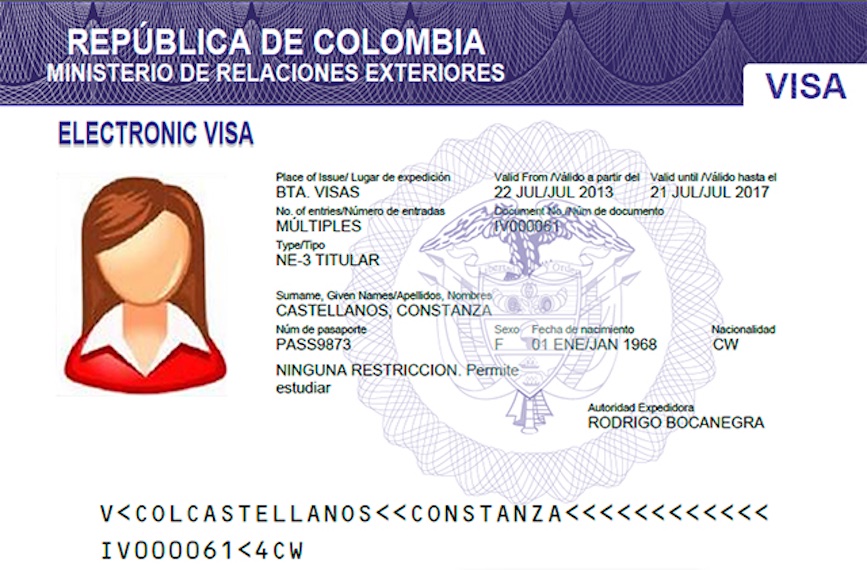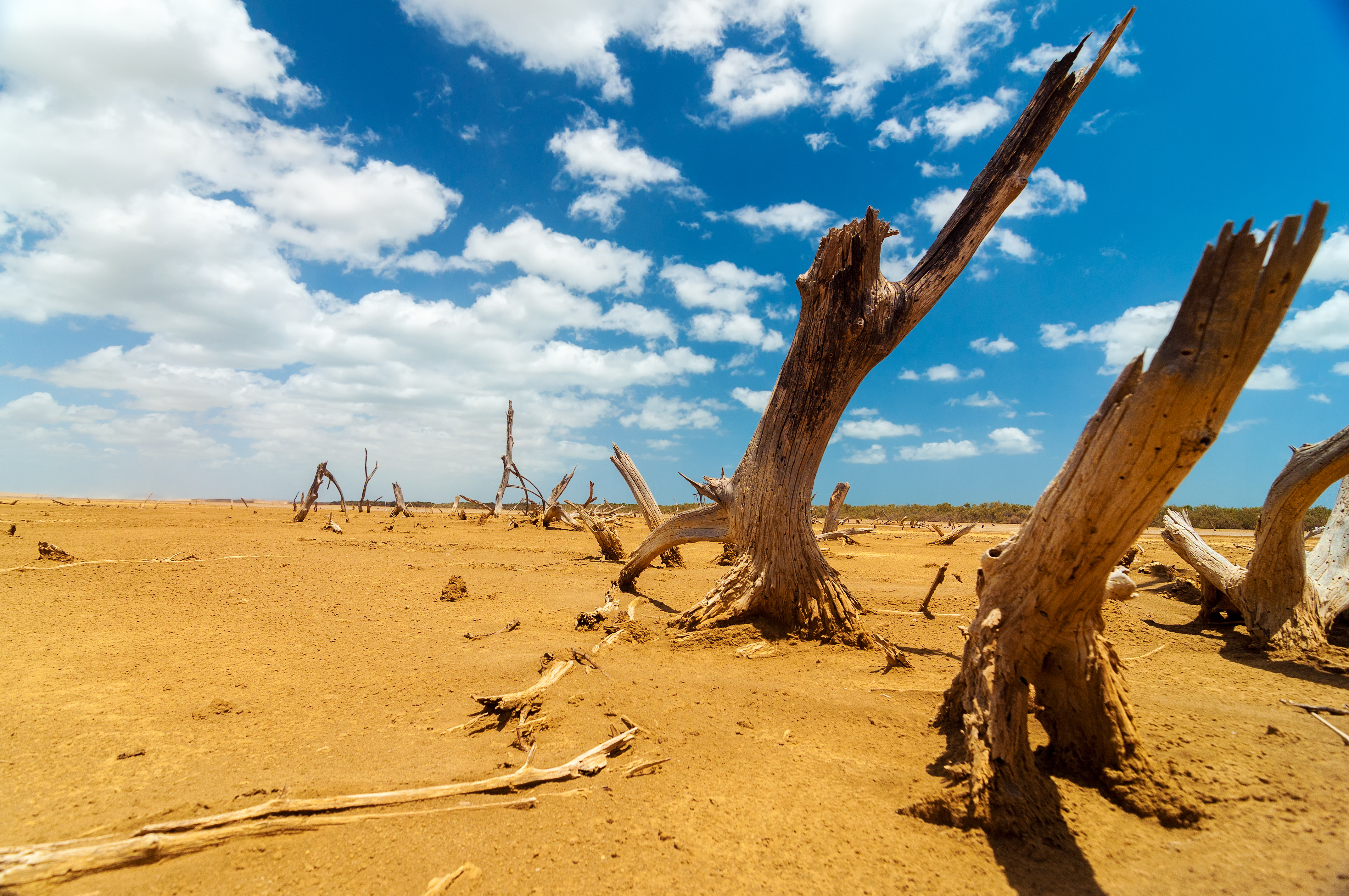
An arid plain in the Department of Guajira. Photo by Jess Kraft.
On the arid plains of Colombia’s northeastern peninsula, the mostly indigenous communities are lucky if it rains twice a year. Some years, it doesn’t rain at all.
Brutal droughts, caused by El Niño, have taken a heavy on toll on Colombia’s largest indigenous group – the Wayuu people – 400,000 of which inhabit the Department of Guajira. Rivers and tributaries have run dry, leaving scarce water for human consumption, agriculture and basic sanitation. Many communities have to travel several hours on foot to buy expensive water delivered by government-contracted tanker trucks. Those who cannot afford a canister of drinking water are forced to drink from the scarce wells scattered across the peninsula. Well water is typically salty and contaminated by dirt; its consumption has caused serious health problems, such as kidney failure and in some cases death. Local hospitals, void of funding, use contaminated water to clean medical equipment, in turn reducing their already limited capacity to respond to a variety of health concerns in La Guajira – one of Colombia’s most impoverished departments.
In response to the crisis, Colombian and German scientists have been working to improve access to clean water. On the grounds of a boarding school in Aremasahin, a small town in the largely rural northeast of La Guajira, German water purification experts Membran-Filtrations-Technik (MFT) and off-grid power systems operator Infinite Fingers – in partnership with Colombian renewable energy specialists Colenergy.co – have designed and built a desalination plant which runs entirely on wind and solar energy.
The pilot plant, named the ROA SEA 100 and led by MFT’s Oliver Koptsch and Colenergy’s Camilo Canon, uses a technique called reverse osmosis to produce drinking water from contaminated groundwater. The technique works by passing either brackish water or seawater through a series of membranes to extract salt and filter out bacteria and other impurities. The plant is hooked up to solar panels and a small wind turbine, which together supply 100 percent of the plant’s energy and thus allow it operate independent of the electricity grid. Inside the plant there are two lithium-ion batteries used to store excess energy, allowing it to operate for up to nine hours without daylight. Data from the plant is transferred to an office in Cologne, where staff monitor water temperature, pressure and flow rate.
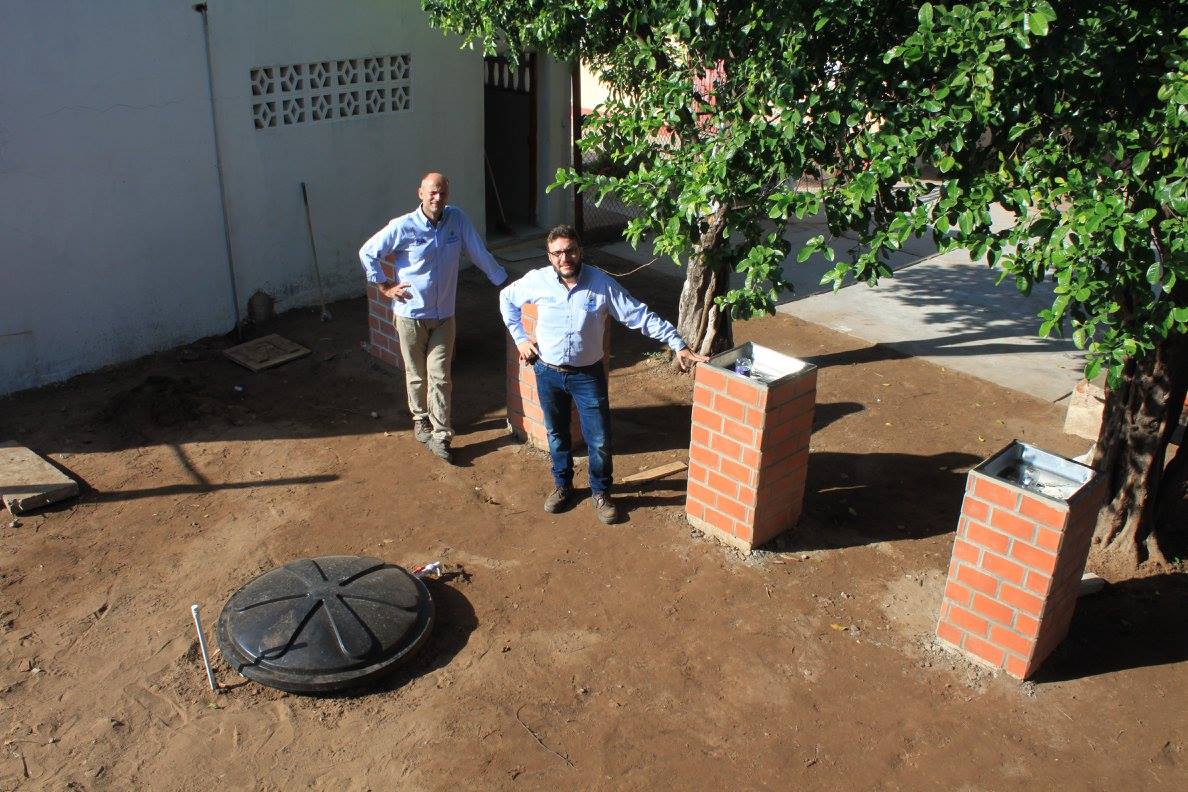
Colenergy’s Oscar Medina and MFT’s Oliver Koptsch standing in front of the desalination plant. Photo by Oscar Medina.
Desalination using reverse osmosis is by no means new technology. However, it is not usually a cheap process, according to Joan Tarragó, co-founder of Infinite Fingers. “Reverse osmosis is well-known as one of the most difficult processes to pull-off, due to the high energy costs required to separate salt from water,” he said in a recent conversation with The Bogotá Post. Most desalination takes place in large-scale plants, with energy costs of up to 70 percent of total operations.
But by harnessing La Guajira’s ample wind and solar energy, the pilot plant’s architects have managed to drastically reduce the energy costs required for reverse osmosis. Renewable energy works in parallel with the plant’s so-called ‘energy recovery unit’ – a system designed by MFT which uses the energy generated from pumping out disused water to increase the pressure of the pump used for the desalination process.
As a result, the plant can produce 1,500 litres of drinking water per day with virtually no energy costs. 1,000 litres go to the boarding school’s pupils and staff, free of charge, and the rest is picked up by a local delivery man who cycles the water to nearby communities. Residents can purchase a 20 litre container for just 2000 pesos ($0.65), and the money made from water sales funds the plant’s maintenance and repair.
Making desalination technology more accessible has the potential to improve clean water supplies in regions with poor infrastructure, scarce energy supply and limited public funds. Already at the boarding school in Aremasahin, there has been a rapid decrease in the number of children falling ill from consuming unclean water. The project’s partners are hoping to build on the lighthouse project and set up a series of new pilot plants in other areas of La Guajira. The Department remains a high priority, due to its critical lack of access to clean water and widespread poverty.
But to scale up the technology, the project’s partner will need to find new sources of funding. Setting up the plant in Aremasahin cost €20,000, half of which was paid for by the German government-owned development bank KfW.
“The idea is to make the technology cheap enough to be funded through water sales, so that we can attract government subsidies, donations or investment from private entities,” said Tarragó. “We’ll need around five to ten pilot plants to show good results.”
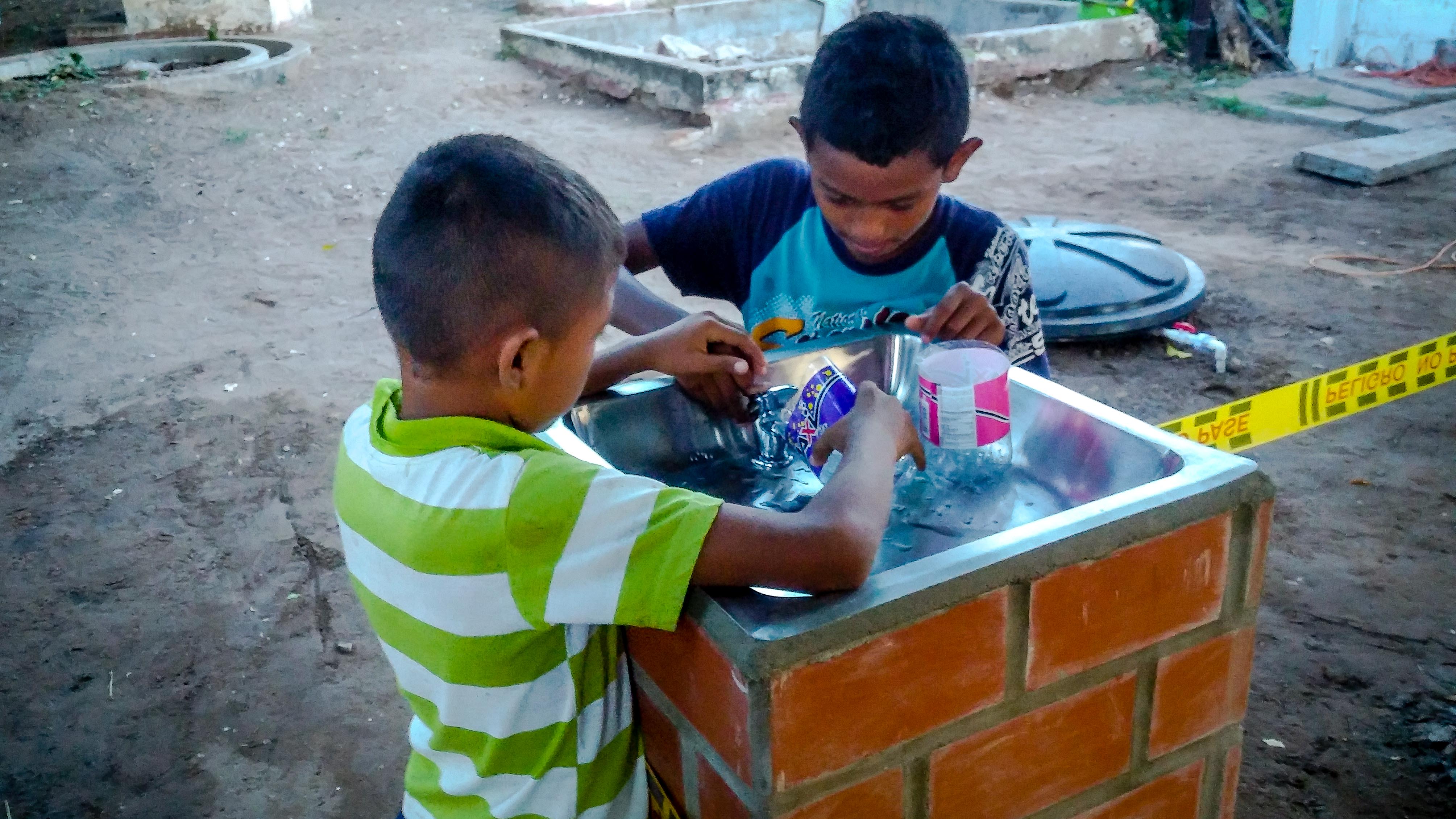
Children filling up water bottles from a fountain outside the desalination plant. Photo by Oscar Medina.
Director general of Colenergy, Camilo Canon, recognises the importance of government subsidies and is currently trying to convince the Colombian Water Minister to co-finance the new plants in La Guajira. “The project works well in communities where even though there is poverty, there is also income,” he said via e-mail. “However, government assistance will definitely be required in areas with poverty on the same level as La Guajira.”
Efforts made by national and regional government agencies to alleviate the water crisis have been ineffective, leaving Wayuu communities with almost no water fit for human consumption. Community leaders bemoan weak governance, corruption and isolation from the state, which remain a major blockade to improving clean water supply.
Miguel Ramírez, director of the Wayuu communications agency Notiwayuu, is among those frustrated by faltering water governance. “The State has created a corrupt system for providing water to communities in La Guajira,” he claims. “They control the contracts for the tanker trucks delivering water to communities and sell them for exorbitant fees. Especially around election time, many votes are trafficked in the hope of securing a contract.”
In addition, vast amounts of money have been squandered on white elephant projects. For instance, locals complain that the $9 million loaned by the World Bank to the Department of Guajira in 2007 has done little to improve sanitation or access to drinking water. A hydroelectric dam, completed in 2010 at a cost of 650,500 million pesos, has not come remotely close to fulfilling its primary objective of providing clean water for 354,000 inhabitants and 18,536 hectares of land.
Unabated mining activity further exposes Wayuu communities to water contamination. La Guajira is home to one of the world’s largest open coal mines, El Cerrajón. An independent study by Colombian NGO Indepaz recently concluded that the mine is polluting the Ranchería River – La Guajira’s most important source of surface water which 55,000 people depend on for drinking and bathing. Research by Indepaz shows that concentrations of lead and other heavy metals increase around the coal mine and continue downstream, leaving the water unfit for human consumption.
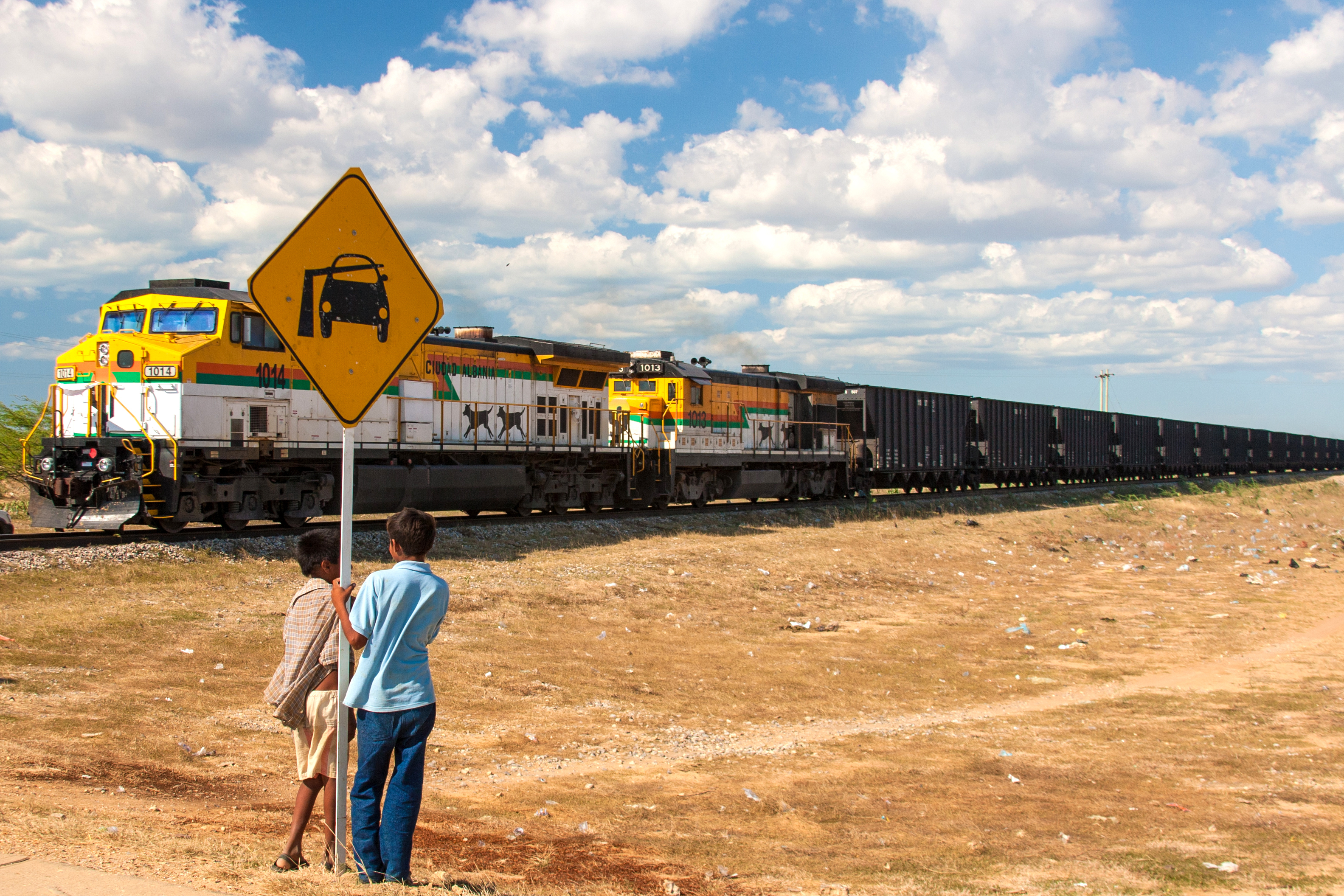
Two boys watch as the El Cerrejón coal transportation train passes by in La Guajira. Photo by Anamaria Mejia.
El Cerrejón vehemently denies any wrongdoing and is quick to point out that it has supplied more than 74 million litres of drinking water to local communities using one of its trains. Nonetheless, Wayuu community leaders blame the mine for water contamination and for drying out rivers and tributaries during the worst years of drought, between 2012 and 2015.
Solving the water crisis in La Guajira is thus as much a political issue as it is a natural or technological one. Government neglect, corruption, funding gaps and weak environmental regulations obscure efforts to supply clean water, leaving water basins contaminated and hospitals ill-equipped to deal with a host of health problems stemming from a lack of clean water. Children are particularly vulnerable, a reality reflected by La Guajira’s high rates of child mortality.
Colenergy’s Camilo Canon believes the bleakness of the situation in La Guajira should encourage the Colombian government and other entities to fund further desalination projects. “Colombia has just joined the OECD, and an OECD nation cannot have levels of poverty and access to water like in La Guajira,” he said. “The constitutional court has called out the Government on numerous occasions, blaming it for the lack of available drinking water and for child mortality.”
In the meantime, the daily struggle for clean water drags on. “Yes, desalination is an alternative and projects can thrive with political will,” said Miguel Ramírez. “However, the main fight is to defend the existing natural water flows in the region.”

